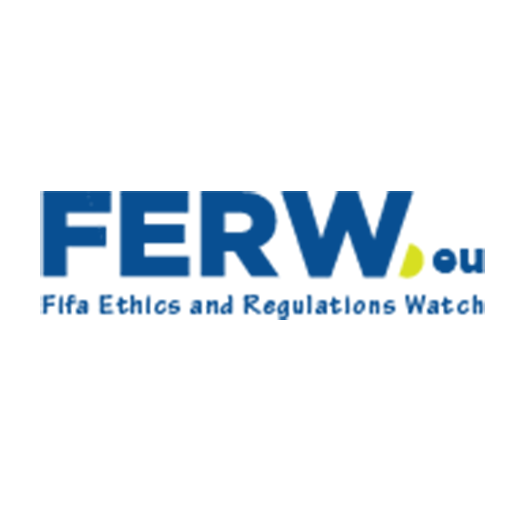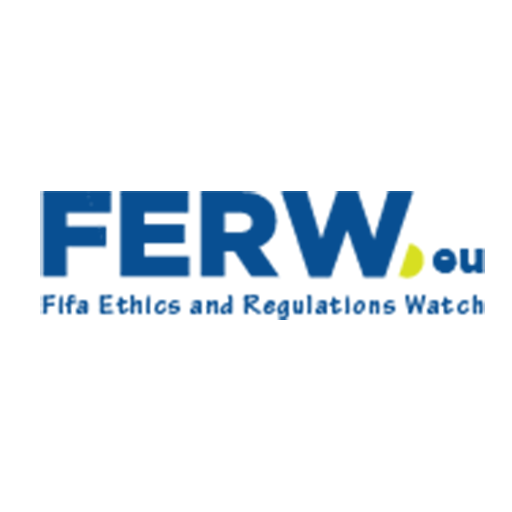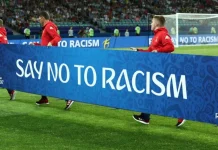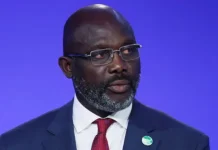The 2025 club world cup that will be hosted in eleven cities in the United States became the hot topic in the global debate of equality and sports. Historically a platform of footballing prowess and progressive communication, this year it wasn’t the case. Given that the prior advertisements were praised by supporters, the media, and even human rights organizations, FIFA’s decision to remove all of the pre-planned anti-racism and anti-discrimination content was a significant shift.
Rather than the usual slogans, such as, “Say No to Racism”, the viewers saw the ambiguous one, “Football Unites the World”. Dance cams and generic branding were applied in the stadium, and none of the messages aimed at promoting anti-hate ideology and bolstering minority groups. That was not cosmetic, as it changed the ambiance of an event watched by millions.
Tracing The Progress: FIFA’s Anti-Bias Legacy
The Rise Of Anti-Discrimination Campaigns
When FIFA decided to venture into human right advocacy, it was not by mistake. The role of a social influence that FIFA had adopted since 2017, when it had accepted its Human Rights Policy, contributed to the incremental position it had adopted. Inclusion is one of the central pillars of its international image since campaigns were implemented during the 2018 and 2022 Men World cups and the 2023 Women’s World cup launching. These moves were not mere symbolic but this was part of a bigger move that was in line with the global human rights principles.
Measurable Impact And Public Perception
These campaigns produced some quantifiable changes. The reporting of acts of discrimination increased but this was not as a result of an increase in hate rather through increased awareness and accountability systems. The audiences, referees, and players started to use official platforms to deal with slurs, misbehaviors, and abuse. Anti-bias messaging, as it turned out, was not just a shield, but a sword, as well, a means of educating and doing.
The visibility also helped frame sport as a leader in social issues. FIFA’s messaging contributed to a broader cultural recognition that what happens in stadiums often reflects what happens in society. The visibility of these campaigns was not an accessory—it was integral to shaping behavioral norms.
The Retreat: FIFA’s Decision And Its Immediate Fallout
Cancellation And Silence
The timing of FIFA’s decision to pull anti-bias content was as baffling as the lack of explanation. Messaging materials had already been developed for the tournament, but were shelved days before kickoff. Anti-bias images only surfaced, albeit infrequently, on June 18, the International Day for Countering Hate Speech. After that, silence.
The organization has so far declined to explain how such messaging conflicts with its stated position of political neutrality. Its statutes do mention neutrality, but the classification of anti-discrimination as “political” remains a gray area. The absence of any public clarification has only added to the confusion.
Stakeholder Response
FIFA’s decision has provoked a torrent of criticism. The Dignity 2026 Coalition condemned the move, stating that
“Withdrawing its own anti-discrimination and anti-racism messaging, FIFA is sending a dangerous signal to players, fans, and the wider public.”
Bailey Brown, president of the Independent Supporters Council, warned that normalizing this absence may undo years of progress.
Minky Worden from Human Rights Watch called the move “inexplicable and inexcusable,” while Andrea Florence from the Sport & Rights Alliance warned it “sends a chilling message that discrimination will be tolerated.” The backlash wasn’t isolated. It came from across the football ecosystem—clubs, federations, civil society organizations, and fans.
The Broader Context: Politics, Policy, And Public Pressure
The U.S. Political Climate
The ruling cannot be disentangled with the overall socio-political changes in the U.S. where this Club World Cup event is held in 2025. Several states have reversed diversity, equity, and inclusion (DEI) requirements. In a second presidential term of Donald Trump, the federal government has grown to be less favorable toward DEI policies, a trend that is exemplified in federal agencies, education, and even the corporate regulation.
Piara Powar, Executive Director of the Fare Network, noted that FIFA may have been motivated by fear of political backlash. “FIFA did not want to promote the messages in case it upset President Trump,” Powar suggested. Whether or not the decision was directly influenced by U.S. politics, the alignment is too strong to ignore.
Global Ramifications
Many consider the Club World Cup to be a dress rehearsal of the 2026 World Cup, of which will be shared between the U.S., Canada, and Mexico. The current silence on the part of FIFA frightens the proponents because they will retain that attitude until that tournament, and it will wind back many strides achieved in the past decade.
Jennifer Li, policy advisor at Georgetown Law’s O’Neill Institute, stated that the decision
“Represents a retreat from the progress made in recent years, since FIFA adopted a Human Rights Policy in 2017.”
NAACP Vice President Jamal Watkins urged FIFA to clarify its stance, saying, “Silence is complicity. FIFA must make its position on human rights known.”
The Role Of Stakeholders: Clubs, Players, And Fans
Lack Of Consultation
One of the most jarring aspects of FIFA’s retreat is the procedural opacity. Neither the European Clubs Association nor FIFPro, the global players’ union, were consulted about the sudden disappearance of anti-discrimination messaging. Both organizations have traditionally been involved in broader ethical and health-related issues in football, making their exclusion all the more notable.
Clubs were reportedly informed after the fact, while players and coaching staff were left to interpret the absence for themselves. Many have publicly expressed disappointment, with some choosing to speak out through personal social media channels or matchday gestures.
Fan Reactions And Incidents
Such messaging is already needed in the light of incidents that were experienced in the tournament. In an Atlanta July 2 game at the Mercedes-Benz Stadium, homophobic chants brought a short stoppage in play and a FIFA warning. The opponents claim that this kind of conduct could have been discouraged in case the regular anti-discrimination message was presented in a visible manner.
Supporter groups from various clubs have organized their own signage, chants, and banners to fill the gap. Their actions are grassroots responses, showing that the appetite for equality and representation hasn’t waned—only the institutional support has.
Why Anti-Bias Messaging Matters Now
The Power Of Visibility
Anti-bias messages do more than occupy screen space—they set the moral tone of the matchday experience. Their presence tells marginalized fans they belong. Their absence tells everyone else that inclusion isn’t a priority. For a global body like FIFA, whose matches reach billions, that silence echoes loudly.
Such campaigns are preventive also. Whenever fans and players notice that racism, homophobia, and homophobia are supported and dismissed, it minimizes the chance that these acts will happen. It becomes obvious as to what the event culture is and will not be allowed.
Lessons From Recent Years
The last decade has shown that consistent messaging can produce cultural shifts. In Europe, stricter sanctions and visible campaigns have led to noticeable improvements in stadium behavior. In South America, local adaptations of global campaigns have been tailored to address specific regional challenges.
Pulling back now risks undoing that momentum. Progress in human rights is rarely linear, and this regression opens the door for others—clubs, federations, even fans—to treat inclusion as optional or irrelevant.
The Road Ahead: Reclaiming Leadership In Sport
The absence of anti-bias messaging at the 2025 Club World Cup is more than an administrative decision. It reflects a strategic choice about what kind of organization FIFA intends to be moving forward. The feedback from stakeholders, however, is unmistakable: the football community expects more, not less.
As preparations ramp up for the 2026 World Cup, FIFA faces a choice. It can course-correct by reintroducing visible, intentional, and localized anti-bias content. Or it can persist in silence, hoping the controversy fades. But in the digital age—when every match is streamed, every message captured, and every silence documented—that hope is dangerously naive.
What’s unfolding now is not just a test of FIFA’s public relations acumen. It is a test of its moral framework. Whether it regains credibility may well depend on how it answers this moment—and how many people are still listening when it finally does.













